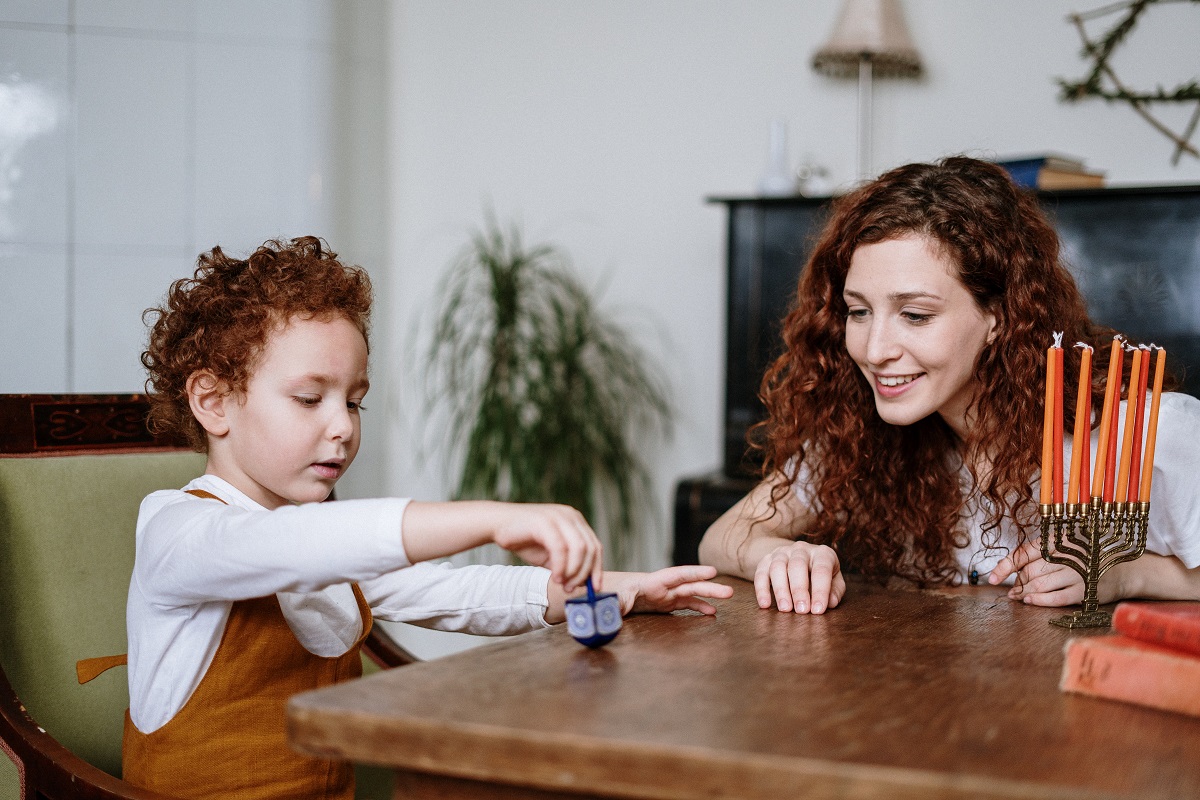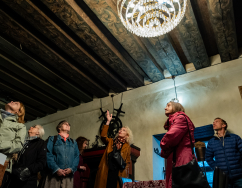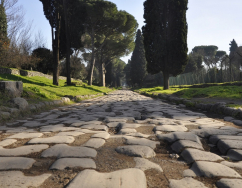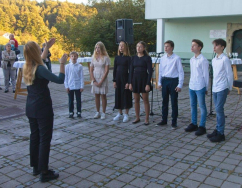European Heritage Days Article:
Living Heritage of the Jewish Culture: Tips and Ideas for Inspiration
European Heritage Days Article:
Living Heritage of the Jewish Culture: Tips and Ideas for Inspiration
Europe and Jews
It is impossible to imagine Europe without Jews, neither in the past nor today. European civilization would be very different without the contribution of the Jewish community. The opposite is also true: the Jewish people as we know it was largely formed in Europe. From antiquity to the present day, a living Jewish tradition has always been a prominent and integral part of the overall cultural palette of the continent.
The continuous and intense interaction enriched all the peoples involved. Exploring complex chains of cultural exchange and mutual influence can be extremely rewarding. Even a slight acquaintance with the separate elements of Jewish civilization, from cuisine to philosophy, from everyday habits to architecture, from costume to literature, can help you look at the cultures of other European peoples, including your own, with new eyes.
Unfortunately, beside the periods of fruitful interaction, there were tragic pages in the history of the Jewish people in Europe as well. Persecution and violence, motivated by prejudice and hatred, forced entire communities to leave the continent. Jews took their culture with them to their new homelands. Not always realizing it, in the spaces from Harbin to Jerusalem and from Johannesburg to Buenos Aires, Jewish communities have become ambassadors of European culture in the last hundred and fifty years.
Acquaintance with the peoples’ culture is a remedy against prejudice
Due to emigration and persecutions, in those places where the Jewish community was previously numerous before their absence is quite noticeable in public spaces. In these areas and settlements, Jewish cultural heritage residue remains. Such objects are definitely deserved to be introduced into active cultural use.
The memory of the horrific Nazi genocide and the importance of social cohesion for the sake of the future motivate us to fight against anti-Semitism today. Countering intolerance towards Jews, like any other form of hatred, is part of the fundamental European values. Raising the level of awareness about the Jewish community should contribute to the disappearance of prejudices and negative stereotypes. Familiarity with elements of living heritage, from everyday habits to “high” culture, helps to increase empathy. European Heritage Days is a great chance to enable such an exchange in the format of workshops, lectures, excursions, festivals and other cultural events.
Although there are more Jews living in Israel and North America today than in Europe, the Jewish community remains an essential element of the continent's cultural diversity. Prayers continue to be said, religious rites are performed, music is played, and lights are lit on Menoras due to Hanukkah in the main squares of European capitals.
Jewish heritage is alive. It is respectfully recognized as part of the treasury of the whole society. However, more can be done to ensure that as many people as possible get to know this unique culture.
European Heritage Days provide the perfect frame for this. We offer several ideas for inspiration for cultural and educational events, such as workshops and excursions, that highlight the ongoing importance of Jewish heritage.
Objects of material culture
One of the best starting points to plan an event is to choose the physical location of the activity in relation to the material objects of Jewish heritage present or, even better, the existing focus points of community activity. Preliminary mapping of such objects and places in your locality is an important first step in planning and preparing an interesting event.
Synagogues. The Jewish community is primarily a religious one. Judaism is the basis of the identity and culture of the Jewish people. A visit to a synagogue is the best way to get to learn about the faith and daily life of the Jewish people. On the other hand, it is to some extent a "closed" institution. An outside visitor, even a local resident who passes by the building on a regular basis, is unlikely to venture inside without encouragement.
Small museums are organized in some synagogues, even functioning ones, in many European cities today. But one must remember that, first of all, we are talking about a religious institution, which should be comfortable and safe for those who pray. Cooperation with representatives of the community is necessary for the delicate organization of the educational visit.
Community leaders often are willing to cooperate, because most of them rightly believe that all parties receive benefits from such interaction. The representatives of the community are the best guides in such an event. Communication with them is a unique opportunity to get a first-hand impression of a living tradition.
The “Night of Museums” format has proven itself successful already. Like some other objects that are usually closed to the public, but of considerable interest to the citizens, a synagogue may be open for visitors on European Heritage Days specifically.
If there is no functioning synagogue in your locality today, this does not mean that it has never been there, especially when it comes to Eastern Europe. Try to find out, or ask for pointers from local historians. With proper preparation a visit to a historic building that is now used for other purposes can be very revealing.
Jewish cemeteries
Unlike a synagogue, a visit to a Jewish cemetery can be arranged even in the absence of a living community in the area (or lack of contact with it). The European Jewish Cemeteries Initiative has some tips on how to organise guided tours to a Jewish cemetery.
With the cemetery being an important place for the performance of ritual and community activity, even a cursory sightseeing tour can provide significant food for thought for a variety of visitors. Who were the people buried here, what did they do, how were they similar and how were they different from us? These questions, which always naturally come to the mind of a cemetery visitor, require additional curiosity when it comes to representatives of another religious community. Even if the inscriptions are made in a language that is incomprehensible to visitors, this should not interfere. Images and symbols on tombstones can provide unique material for the story of Jewish tradition.
With a minimum of preliminary preparation, you can initiate a fascinating independent study directly in the cemetery. Thus, one of the formats that has worked well with groups of teenagers in different countries involves a preliminary lesson devoted to a basic acquaintance with the Hebrew alphabet. In the Jewish tradition, numbers are denoted by letters on the tombstones. Even just by handing out “cheat sheets” to group members with letter correspondences to numbers, you can, for example, invite them to explore the cemetery, trying to find the oldest burial.
Unfortunately, in many areas where today there is no thriving community, Jewish cemeteries are falling into disrepair. Organizing a cleanup in an abandoned cemetery with local volunteers can be an important and rewarding experience.
Any space could become "Jewish" for the duration of the event
If there are no such sites of Jewish material heritage in your locality or nearby, this should not hold you back. Any material object is only a background for your creativity. Nothing prevents you from planning a performance of a musical group playing a klezmer or performing traditional Jewish melodies in any other genre, in any room or outdoors. Acquaintance with the elements of Jewish cuisine in the first approximation, even if all the requirements of kashrut in its orthodox sense are observed, is possible in any cafee or restaurant, or as part of any culinary workshop. Why not have some fun and play dreidel, a traditional Hanukkah game?

A school or any educational institution can be an excellent location to get acquainted with the Hebrew alphabet and its place in the history of alphabetic writing, or, say, to talk about the diversity of Jewish languages, both related to European ones and formed in other cultural and linguistic areas.
A friendly Christian community or a church building can be a great place to talk about the importance of the impact of the text of the basic categories of Jewish tradition, recorded in the Hebrew Bible, the Tanakh, for the formation of European values. To a large extent, through Christianity, although not only, values such as universalism and humanism came to European civilization. Speaking of living heritage, many believers will be interested in thinking about the Jewish roots of many Christian religious practices, such as the ritual consumption of bread and wine, among many others.
Get in touch with the Jewish community
Ideally, events aimed at the widest possible audience, most often unfamiliar with Jewish culture, are planned and carried out in partnership and in close cooperation with the Jewish community.
However, even the absence of the Jewish community in the local area (or the unwillingness of its representatives to cooperate) will not become an insurmountable obstacle to the full preparation and successful delivery of an event intended for cultural education. You can contact representatives of the Jewish community in the capital or regional center. You can try to find people from your locality in Israel or other countries where Jews have left Europe for the past one hundred and fifty years. In addition, local historians often show impressive interest and awareness in the history of the Jewish community of the area.
Thematic cycles
The most important traditions of human societies are associated with the main events of the life cycle, such as birth, marriage and death. Using these themes in events, you can easily find various options for logically linking a rite or custom to a location. For example, a cemetery is a natural place to discuss the afterlife in Judaism and related features of the funeral rite. In a synagogue, babies are traditionally circumcised and named after them, and this is the most important moment in which the significance of the commandments for the religious Jew is concentrated. A kosher restaurant or any food preparation venue is ideal for wedding-themed events.
Another obvious thematic block, which can be associated with the acquaintance with the Jewish tradition, is the annual cycle of religious holidays.
This year, at the end of the week of September 15-17, during the European Heritage Days, Rosh Hashanah, the Jewish New Year, falls. It is difficult to think of a better time to get acquainted with the ancient customs and traditions that are still observed today. This coincidence can prompt a lot of ideas for events. Cooking Jewish New Year's dishes, such as apples and honey, combined with sharing their symbolic meaning, can be an interesting gateway into sharing this celebration together. And if there is an opportunity to be present at the blowing of the ritual shofar horn in your town, then you can be sure that this sound and the ritual associated with it will be remembered for a lifetime.
Get creative! One event can open the door for participants to a previously unfamiliar world of another culture, which is an important part of the shared European living heritage.



